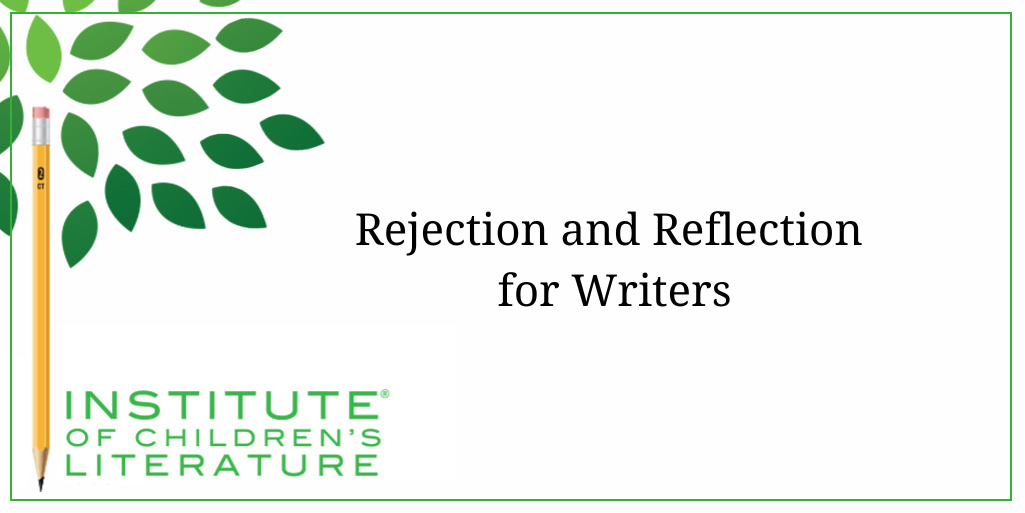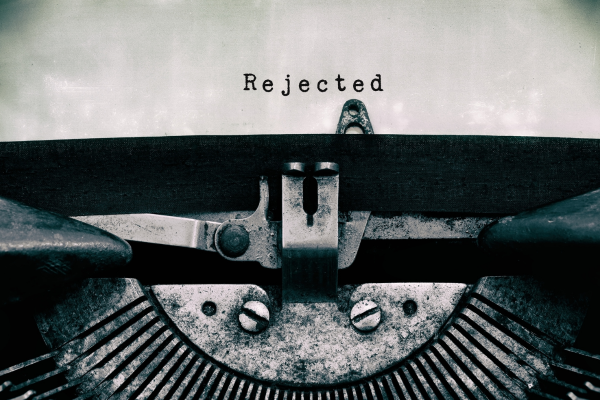
Rejection and Reflection for Writers
Rejection is part of the territory when it comes to being a writer. Today we offer reflection for writers to help redirect your efforts after a rejection.

The best way to completely avoid rejection in the submission process is never to submit. That’s also the way to avoid publication. Some writers do a lot to avoid rejection. I, for example, primarily do work-for-hire projects, so I have a contract when I begin writing. But even then, I stand a chance of contacting a publisher and not being offered a project. Also, I might write a project and the publisher cancel the project for reasons that have nothing to do with me. The second has never happened to me, but it has happened to others, and that is a lot like rejection.

No matter how you’re encountering rejection, it doesn’t feel good. None of us like it. Some have developed coping mechanisms to deal with it. (Which helps.) But getting through rejection requires a little reflection. (Which can be uncomfortable as well.) Let’s try a little reflection for writers anyway, shall we?
As I mentioned above, rejection is part of the package when you decide to pursue writing as a profession. There are very few writers who don’t know its stink. Stephen King told the story of how he used a nail in his wall to hold his rejection slips, each pierced through the heart, “By the time I was fourteen, the nail in my wall would no longer support the weight of the rejection slips impaled on it.” His answer was to get a bigger nail. Because he wasn’t going to quit. He wasn’t going to give up.
In many ways, rejection is proof of effort and courage. If you don’t submit, you don’t get rejected. But if you submit and if you keep learning and growing as a writer, you’ll potentially amass a pile of rejection slips. But eventually, like Stephen King, you’ll collect so much more. As Isaac Asimov once said, “If you have talent, you will receive some measure of success, but only if you persist.” That’s the key. You must persist.
Is that all rejection is? Is it just a test of our endurance and willingness to persist? Is it just there to force us to prove that we aren’t going to give up? It does do that, but that’s not the only thing it does. There’s learning in rejection.
Chuck Wendig says, “Rejection has value. It teaches us when our work or our skillset is not good enough and must be made better. Rejection refines us.” And that is true, to a point. A steady stream of rejection is telling us something is wrong. It may be that something is wrong with our writing.

One thing to keep in mind is that sometimes rejection has absolutely nothing to do with the quality of what you submitted. You may simply have sent it somewhere that doesn’t publish that sort of thing. You may need to work on targeting your submissions. Or maybe you sent it to exactly the right sort of place, but their list is full for now or they have something similar in the works. In those kinds of submissions, which are more frequent than you may think, the work may be fine and revising it may not be the answer.
Saul Bellow once said, “I discovered that rejections are not altogether a bad thing. They teach a writer to rely on his own judgment.” In other words, if you reassess what you’ve written and it’s still a work you love, leave it alone. Move on.
Writers who find success learn to look at rejection differently. That doesn’t mean they learn not to be hurt by it—they just see the next step differently. Maya Angelou once said, “Rejection can simply mean redirection.”
What is redirection? Sometimes it’s a revision step, redirecting the work to make it more successful. Sometimes it’s a research step, redirecting the markets you’re approaching because this piece needs a different kind of home. Sometimes it’s a mental step, redirecting your thoughts so you gain the energy you need to press on. Because success demands movement. Movement to learn and grow. Movement to write better. Movement to research more accurately. And movement to keep trying.

Still, never let giving up on a piece you’ve written become your automatic response. One rejection is meaningless. Disappointing and hurtful, but meaningless. There isn’t much you can learn from it. It’s only in a pattern of rejection that you learn if a piece really needs to be removed from circulation for a while, or even forever. Until you have a pattern, until you can see clearly what needs to be done, the best answer is to press on. As Jack Canfield has said, “I encourage you to reject rejection. If someone says no, just say next!”
Rejection hurts. It’s fine to acknowledge that. But that doesn’t mean avoiding it is the best choice. Sometimes teeth cleaning hurts, but if I avoid getting my teeth cleaned, the results aren’t going to be beneficial. Life is full of things that hurt, but things you really need to buck up and get through. And for writers, rejection is one of those things. That doesn’t mean you have to pretend it doesn’t hurt. Reflection for writers means you need to keep pressing on.
Reassess. Revise if necessary. Research for the best market options. And press on. It’s the only way to succeed.
With over 100 books in publication, Jan Fields writes both chapter books for children and mystery novels for adults. She’s also known for a variety of experiences teaching writing, from one session SCBWI events to lengthier Highlights Foundation workshops to these blog posts for the Institute of Children’s Literature. As a former ICL instructor, Jan enjoys equipping writers for success in whatever way she can.

Rejection is part of the territory when it comes to being a writer. Today we offer reflection for writers to help redirect your efforts after a rejection.

Holiday time is here! Now is a great time for holiday writing. Today we look at writing and selling holiday stories and articles and the best time to sell them.

Publishers know that young people are hungry for good nonfiction. Let’s look at eight ways you can spruce up your nonfiction article writing.
1000 N. West Street #1200, Wilmington, DE 19801
© 2024 Direct Learning Systems, Inc. All rights reserved.

1000 N. West Street #1200, Wilmington, DE 19801
© 2024 Direct Learning Systems, Inc. All rights reserved.

1000 N. West Street #1200, Wilmington, DE 19801
©2024 Direct Learning Systems, Inc. All rights reserved. Privacy Policy.